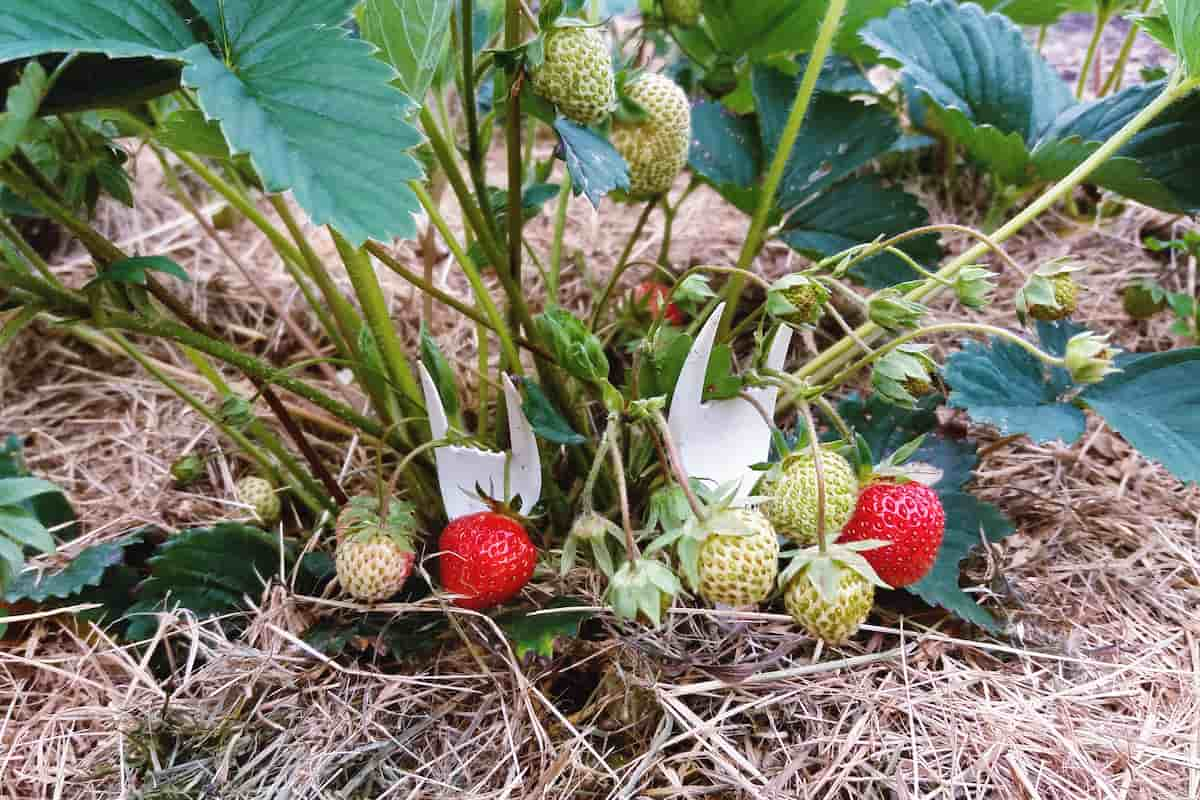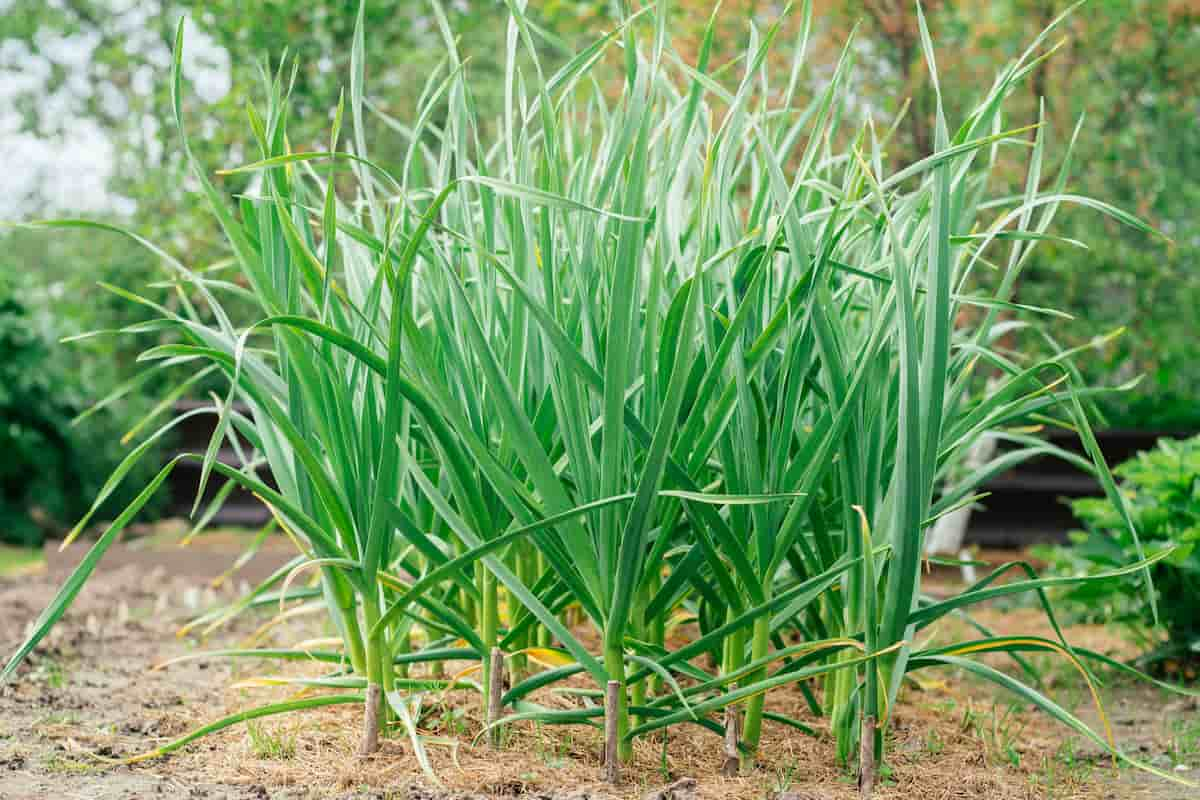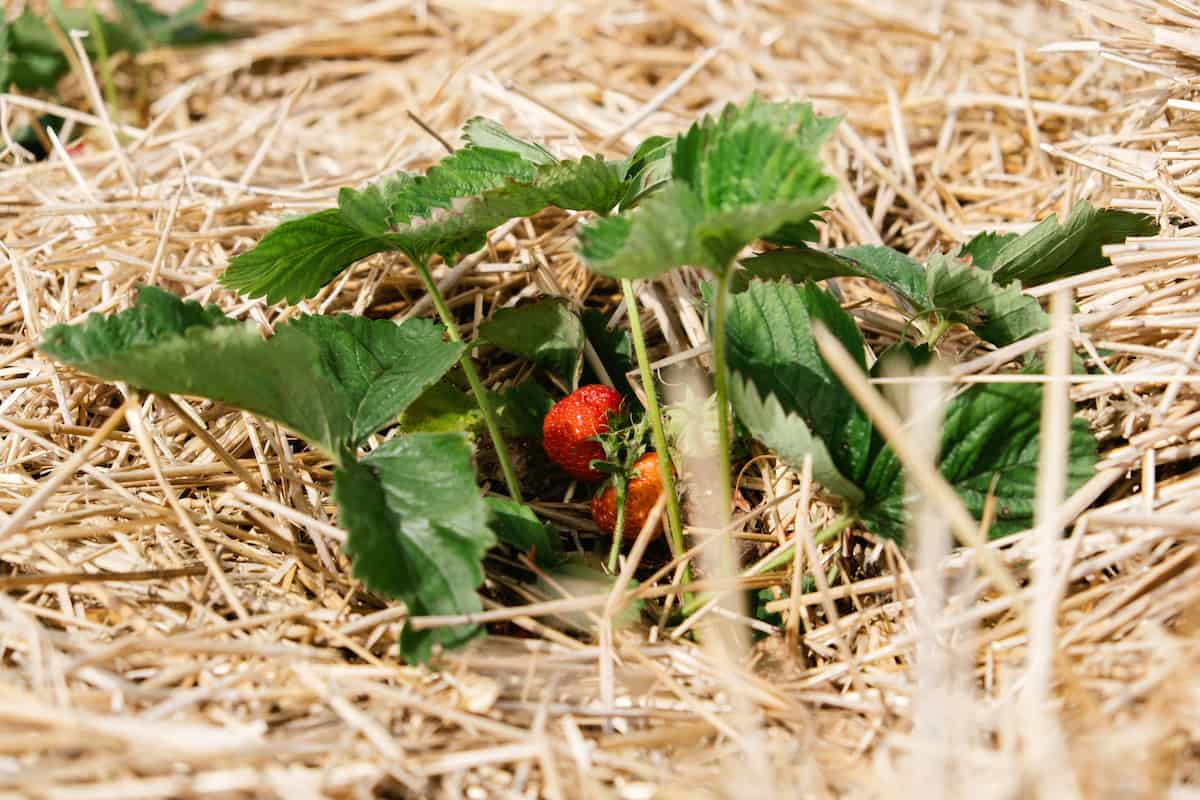Mulch selection is an important step for gardeners. Depending on what you plan to grow, wood chip mulch would be a good option for your garden. It might be best to use grass clippings. However, straw mulch is one of the best mulch for raised bed vegetable gardens. This is the residue of cereals and grains used for mulching. As the remaining hollow stalks of wheat, barley, or rye, straw differs slightly from hay.

Using Straw As Garden Mulch
Best Types of Straw Garden Mulch
Choosing the right straw garden mulch is the first step in using straw as mulch. Mulches made from straw may contain hay, which can sprout weed seeds in your garden rows. Ensure the straw you purchase is weed-free by buying it from a supplier who guarantees it to be weed-free. Wheat straw mulch in gardens works just as well as rice straw since wheat straw carries fewer weed seeds than rice straw. If you can get it, oats and rye straws are among the best straws for gardening.
How to Mulch with Straw
- Straw is an easy mulch to use in a veggie garden. As soon as your seedlings reach a few inches in height and have grown for a few weeks, you are ready to mulch them.
- Seeds and tiny seedlings shouldn’t be covered with mulch to avoid smothering.
- It is okay to sprinkle a very thin layer of straw over the bare soil right after seedlings sprout, but wait until a few more weeks before you mulch fully.
- The soil should be well balanced before you start by adding compost, aged manure, worm castings, or grass clippings.
- If your soil lacks nitrogen, this is particularly important. It can be helpful to conduct a soil test to identify any deficiencies in the soil.
- Afterward, open the bale by cutting the rope at the edge of the garden bed. Straw bales are made of tightly packed layers. You can fluff up the layers with your hands after removing each one.
- Between each plant and between the rows lay the material several inches thick, leaving a few inches bare around each stem to allow airflow and prevent disease.
- Straw can also cover fallow beds or protect your garden during the winter and around growing vegetables.
- It can decompose directly in the garden bed if it is not visibly moldy.
Tips for Using Straw Mulch in Your Vegetable Garden
In the vegetable garden, straw mulch is an excellent choice, but make sure that you keep a few things in mind before you use it. Follow these tips to help your vegetable plants thrive when mulched with straw.
Use A Clean Straw, Not Hay
It is important to note that straw and hay differ in one important way: Hay, grown for animal feed, contains seeds. Mulch containing these seeds germinates and creates weed problems. There are very few seeds in a good-quality straw. Weeds should be checked on straw bales before purchasing. The weedy straw will also sow weeds in your garden-exactly the opposite of what you want.
Nitrogen Should Be Applied To The Soil Before Planting
In the process of breaking down straw, nitrogen may be temporarily robbed from the soil. It can be easily avoided by adding compost, well-rotted manure, worm castings, or organic fertilizer to the soil before planting and mulching.
Don’t Lay the Mulch until Your Vegetables Grow for a Few Weeks
Mulch applied over newly planted seeds may prevent them from germinating. If you are seeding peas or beans, straw is a great way to protect those seeds from being robbed by birds. Cover the peas or beans lightly with straw as soon as they are up and growing.
Make Sure Your Garden is Weeded Before You Apply Mulch
Although mulch will prevent most new weed seeds from germinating, removing existing weeds before spreading straw is important. The germination of most annual weeds is triggered by sunlight. We can eliminate nearly all the annual weeds in the garden if we prevent sunlight from reaching the soil surface.
In case you missed it: A Guide to Agriculture Mulching Sheets: Types and Best Practices for Usage

At Least Four To Eight Inches Of Straw Should Be Applied
Although this seems like a lot, straw compresses quickly, and good coverage is essential for getting the most benefit from mulch. As a result of this insulating layer, beneficial microbes will help build soil. Additionally, it prevents erosion.
Mulch Away From The Plant Stem
Cover the space between rows thoroughly, but don’t go right up to the stems of the plants, which may encourage fungal diseases. It is recommended to leave one to three inches of space around plant stems so air can circulate and rot won’t occur.
Replenish Your Straw Mulch Throughout the Gardening Season, Especially Into the Fall/winter
Add additional straw halfway through the growing season to maintain good coverage if necessary. Straw breaks down quickly. It is especially important to apply an adequate layer of mulch during the summer months.
Mix Your Straw Mulch Into the Soil to Improve Structure, Micro-Organisms, and Fertility
Adding straw mulch to your garden soil at the end of the growing season improves its quality. Using tillage, straw can be turned into soil to foster microbial activity because it breaks down rapidly. This process makes the soil healthier and more capable of producing and storing nutrients that plants need to thrive.
Benefits Of Using Straw As Much
- Straw is particularly beneficial for keeping the soil evenly moist, ensuring better drainage during droughts and floods, and greater protection for plants.
- It keeps soil cooler during hot summers and warmer during cold weather by acting as an insulating blanket. As a result, plants grow healthier and can grow for a longer period.
- The thick application can also greatly reduce weeding by blocking light from reaching the soil, preventing weed seeds from germinating and killing sprouted seedlings.
- The material decomposes relatively quickly, building soil mass and releasing nutrients that can nourish your plants as they grow as the material decomposes.
Potential Downsides of Mulching with Straw
- Straw decomposes quickly into the soil, especially compared to wood chips, so it might not retain its golden appearance for very long.
- The warm, fluffy, and soft material can be a great home for rodents, so keep that in mind, especially if you have an issue with them.
- Since it is light, it is likely to blow away more readily than some other materials when you first lay it down.
- It cannot be easy to take apart a straw bale (or bales), which can be weedy. In some cases, they may even promote soil-borne diseases when applied too thickly or thinly.
In case you missed it: Homemade Fertilizer for Vegetables in Your Home Garden

Conclusion
You can improve your veggie garden with the right mulch. It is especially useful for straw, which offers a wide range of benefits that will improve the health and productivity of plants and save you money and labor.
- Feed Your Flock for Less: Top 10 Tips to Save on Chicken Feed
- Ultimate Guide to Ossabaw Island Hog: Breeding, Raising, Diet, and Care
- Hatching Answers: The Top 10 Reasons Your Chickens Aren’t Laying Eggs
- Eggs and Economics: Breaking Down the Cost of Raising Backyard Chickens
- Defend Your Greens: Proven Methods to Keep Iguanas Out of Your Garden
- Ultimate Guide to Cinnamon Queen Chicken: A Comprehensive Guide for Beginners
- Ultimate Guide to California Tan Chicken: Breeding, Raising, Diet, Egg-Production and Care
- Ultimate Guide to Marsh Daisy Chicken: Breeding, Raising, Diet, and Care
- 10 Types of Chicken Farming Businesses You Can Start for Profits